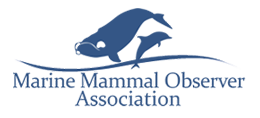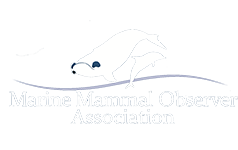Members Activities
Gary Robinson
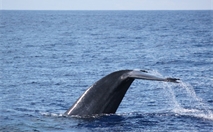 Starting my degree in Marine Biology in 2006, I was a young man with an aspiration to further my passion for biology and more specifically, fish. The big dream was to graduate and become a fisheries observer, testing myself in the harshest of environments all around the world but after persistent attempts to land my dream role overseas and seemingly facing an insurmountable task due to restrictions on foreign workers, I widened (narrowed) my horizons and focused on work here in the UK. Shortly after this turning point in my mind-set, I would be offered a permanent position at a marine environmental consultancy as a marine ecologist which would kick-start my progression towards marine mammal mitigation, both here in the UK and overseas.
Starting my degree in Marine Biology in 2006, I was a young man with an aspiration to further my passion for biology and more specifically, fish. The big dream was to graduate and become a fisheries observer, testing myself in the harshest of environments all around the world but after persistent attempts to land my dream role overseas and seemingly facing an insurmountable task due to restrictions on foreign workers, I widened (narrowed) my horizons and focused on work here in the UK. Shortly after this turning point in my mind-set, I would be offered a permanent position at a marine environmental consultancy as a marine ecologist which would kick-start my progression towards marine mammal mitigation, both here in the UK and overseas.
My motivation for marine mammal mitigation was, in essence, thrown upon me during my multi-faceted role as a marine ecologist in a small but diverse consultancy. I was asked to take an interest in marine mammals which, in total honesty, had not really been on my radar up until this point. I was knowledgeable but I wasn’t passionate…at least at that early stage. So, several years later with a number of large marine mammal mitigation projects, several hundred marine mammal sightings and a few unbelievable close encounters under my belt…I had the passion and a shed load of experience to boot. 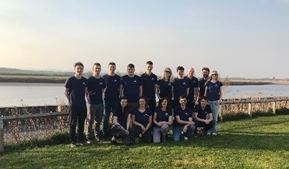 Now, as director of Ocean Ecology, a marine environmental consultancy that is passionate about all things marine and dedicated to working with those making use of and governing the marine environment I have truly found my place in the industry. Our experienced team of scientists work on a uniquely responsive basis to facilitate timely project delivery in compliance with marine policy and regulation.
Now, as director of Ocean Ecology, a marine environmental consultancy that is passionate about all things marine and dedicated to working with those making use of and governing the marine environment I have truly found my place in the industry. Our experienced team of scientists work on a uniquely responsive basis to facilitate timely project delivery in compliance with marine policy and regulation.
This not only includes marine mammals but benthic ecology, fish and more recently, geophysical ventures. Whilst my role is not so free spirited these days, I still enjoy a considerable amount of time in the field and continue to focus on providing marine mammal mitigation advice and support to a growing and evermore ecologically aware industry. My work as a consultant now focuses on providing advice, developing sound monitoring and mitigation procedures and also undertaking surveys to gather evidence in support of Environmental Impact Assessments (EIAs). As an MMO, I still continue to provide support in the field during mitigation programmes for offshore wind farms, seismic / geophysical surveys and subsea cable investigation.
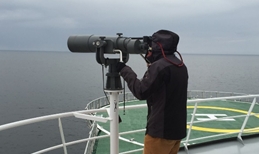 Aspiring to remain a qualified, experienced and current MMO and PAM Operator remains a key focus of my career goal and this was the driving force behind me becoming a member of the Marine Mammal Observer Association (MMOA).
Aspiring to remain a qualified, experienced and current MMO and PAM Operator remains a key focus of my career goal and this was the driving force behind me becoming a member of the Marine Mammal Observer Association (MMOA).
All too often now, I can find my time is split between marine mammals and benthic ecology which forms a significant portion of Ocean Ecology’s workload and so being a member of the MMOA ensures I remain in touch with updates to the industry, have a platform upon which to seek advice and support but also voice my opinion and open up discussion on the forum.
Most importantly however, it allows keep in touch with those who share the same passion as me.
Amy Ferguson - Dedicating valuable time to Not-For-Profit groups
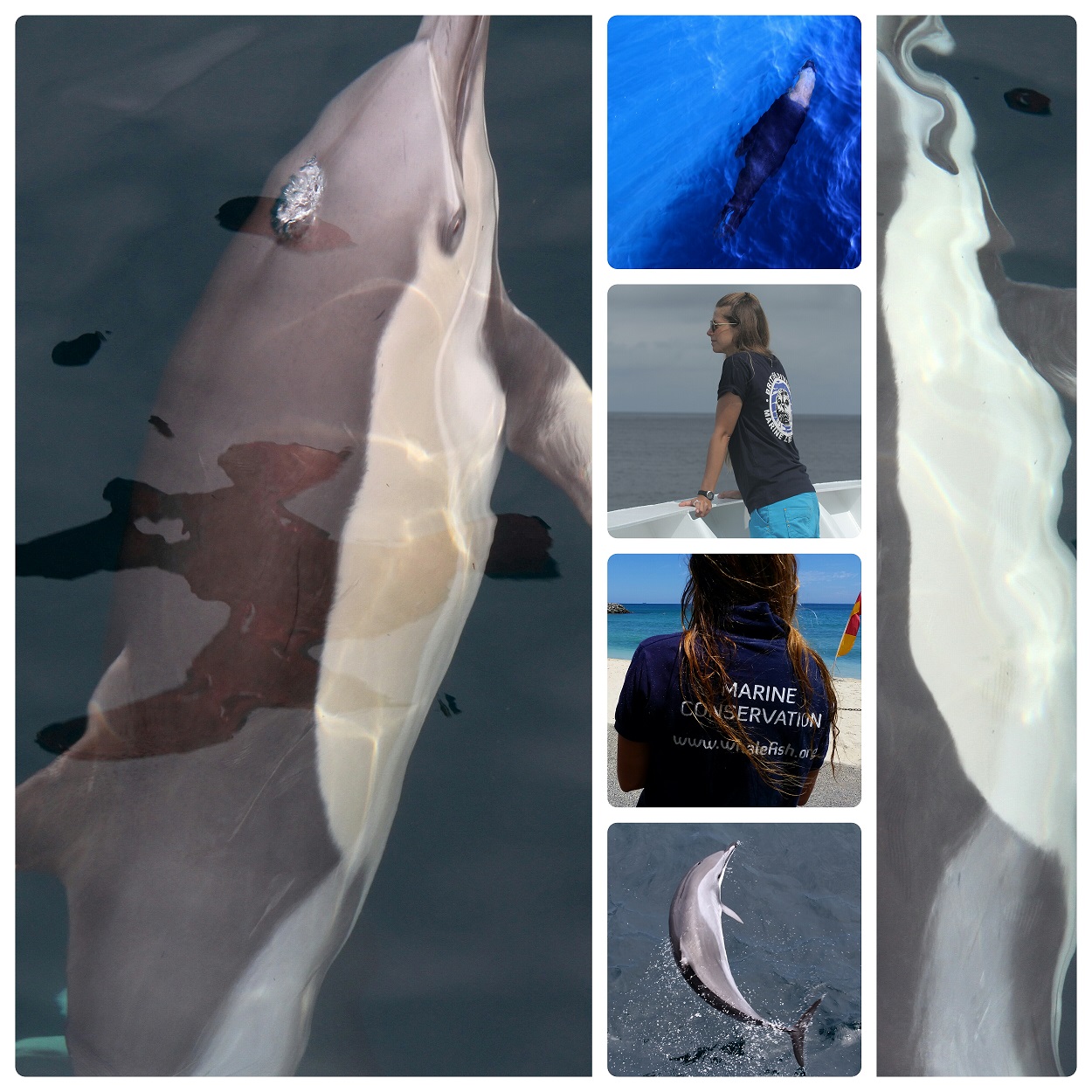
Having been fortunate to work as a marine mammal observer (MMO) for several years, I cannot help but relish the days and days of free time accumulated after several weeks at sea; away from friends, family, trees and mountains! For me, this vacant time, full of potential, is as much of a privilege as finding oneself in the company of breaching humpbacks, infinite troops of pantropical spotted dolphins and giant manta rays feeding at sunset. As dedicated marine conservation specialists, most of us will have worked with research projects, as volunteers, interns, naturalists, directors and will have strong affiliations with not-for-profit organisations (NPOs). It is my mission to utilise my valuable free time to offer and receive knowledge and understanding of global conservation efforts and to find my place in that multi-dimensional NPO puzzle. Not-for-profits are at my roots having first become engaged in volunteering with Healthy Hawaii Coalition and Wild Dolphin Foundation on the island of Oahu, Hawaii over a decade ago. Since then I have continuously had my fingers in two or three proverbial NPO pies at once; they have become somewhat addictive. My MMO and NPO roles have formed a mutually progressive, symbiotic relationship with often surprising benefits sprouting off at unforeseen tangents.
Current extracurricular commitments can find me on the Scottish east coast instructing dolphin rescue techniques (Area Coordinator for British Divers Marine Life Rescue - BDMLR), in remote locations taking samples from stranded cetaceans for analysis (Stranding Volunteer with Scottish Marine Animal Stranding Scheme - SMASS) or providing research material to an enthusiastic 7 year old who has a marine conservation project to complete for primary school (Education Officer for Whalefish). In every interaction with NPOs, I have found myself willing to give of my time and have consistently ended up gaining far more than I ever anticipated. Through my work with BDMLR came the opportunity to become a trained member of Europe’s first and only Large Whale Disentanglement Team. By offering to take samples for SMASS I have been privileged to witness the internal workings of several species of marine mega-fauna. One of the greatest honours of all has to come from encouraging the development of budding marine conservationists and in turn having my eyes opened to just how engaged such young minds can be. However, I cannot help but be equally excited to visit Patagonian Argentina later this year to assist with the bottlenose dolphin research project founded by Dr Els Vermeulen, Science Director of Whalefish.
None of the NPO projects come with any monetary return but the insight and experience gained is beyond the value of any coins. Through my work as a MMO I have been afforded time to devote to a colourful array of projects, travel opportunities to become acquainted with elusive species of far-flung oceans and importantly, an arena to connect with an international spectrum of people and organisations who work in different ways to achieve the same thing; a more thorough understanding of the ecosystems we aim to protect. By its very nature, this is an unstable line of work and you may find yourself with more free time than you predicted, if so, get stuck into some not-for-profit work. It might be that by giving freely of your time and efforts, you are rewarded more handsomely than you ever imagined possible.
Kyla Graham - Co-creator of the Marine Mammals of the World ID Group on Facebook. How members incorporate social media tools into thier MMO and PAM work.
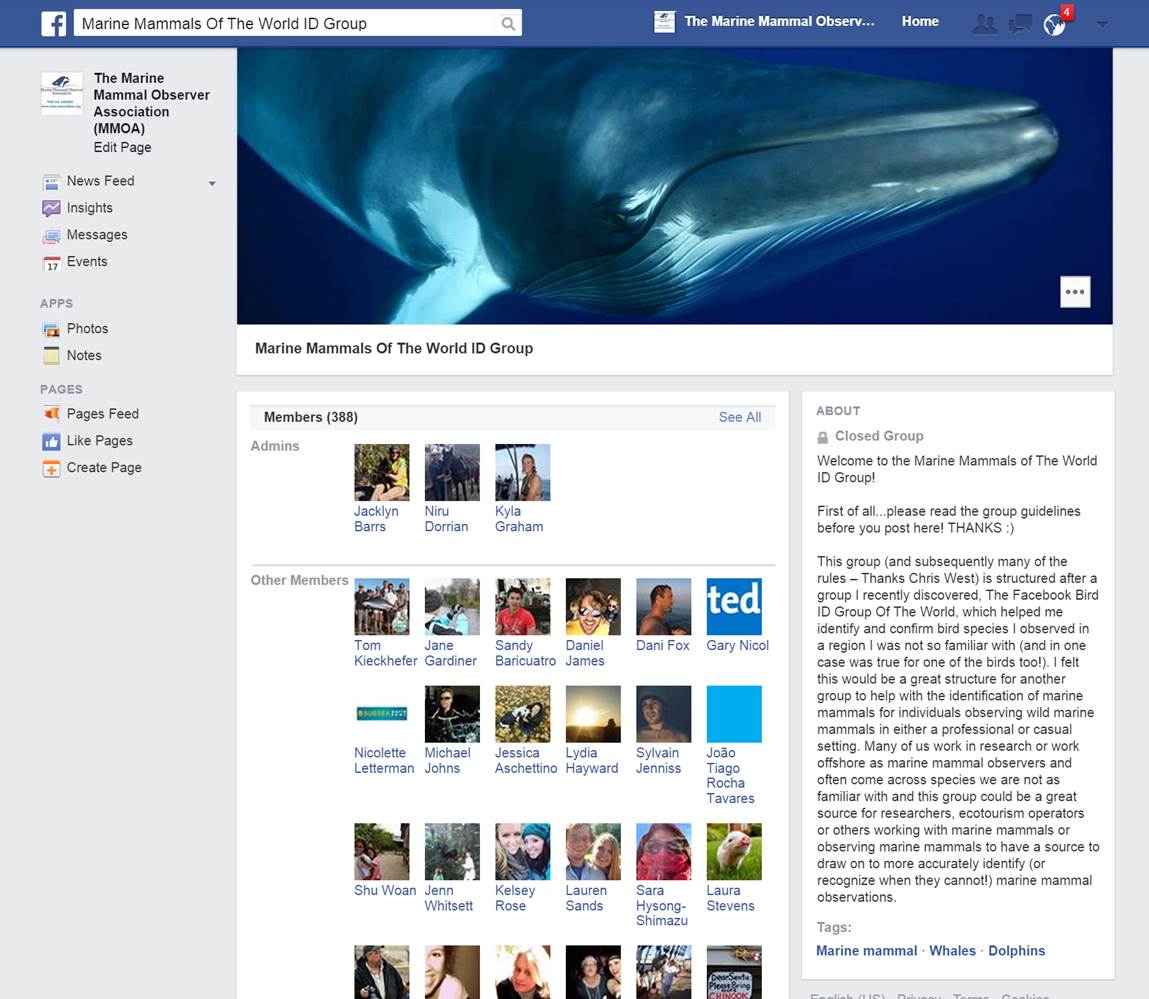 Through the nature of their work, Marine Mammal observers (MMO) have the wonderful opportunity to see not only marine mammals but a variety of other wildlife species including birds, fish and even bats! For me, I evolved from a somewhat interested amateur bird watcher to somebody who is now passionate about photographing and identifying the great variety of bird species I see while working all over the world. Of course, I still consider myself an amateur bird watcher but I am always keen to learn more about birds, and though I have learned a lot from more experienced co-MMOs, I look for any opportunity to learn more about bird identification. Fortunately, once while I was trying to confirm a bird’s identification, I discovered the Facebook Bird ID Group of the World.
Through the nature of their work, Marine Mammal observers (MMO) have the wonderful opportunity to see not only marine mammals but a variety of other wildlife species including birds, fish and even bats! For me, I evolved from a somewhat interested amateur bird watcher to somebody who is now passionate about photographing and identifying the great variety of bird species I see while working all over the world. Of course, I still consider myself an amateur bird watcher but I am always keen to learn more about birds, and though I have learned a lot from more experienced co-MMOs, I look for any opportunity to learn more about bird identification. Fortunately, once while I was trying to confirm a bird’s identification, I discovered the Facebook Bird ID Group of the World.
I soon came to appreciate that the Facebook Bird ID Group Of The World was a great place to learn, practice and confirm the bird identification. In fact, as a result of posting some of my sightings on the group page, some of my bird sightings and photographs have been shared with bird specialists and researchers. For example, I posted a few photos of what I believed was a Lanner Falcon (Falco Biarmicus) I observed off Angola but I was not confident with the identification so posted photos to the group page for confirmation. After some online discussion amongst the group members, the bird was confirmed to be a Red-footed Falcon (Falco verspertinus), a species considered to be extra-limital in Cabinda Province, northern Angola and so I was asked if I could share the data on this interesting sighting. I requested permission from the client and the data was subsequently shared with the Coordinating Unit of the UNEP/CMS Memorandum of Understanding for the Conservation of Migratory Birds of Prey in Africa and Eurasia. Not bad for an amateur birdwatcher!
Not long after my success identifying bird species through the extensive knowledge of the experienced and professional bird watching members in the Facebook Bird ID Group of The World, I realized that a similar Facebook group would be a great forum for anybody, whether MMO, researcher, whale watching guide, amateur whale watcher or somebody who has just seen a marine mammal their first time, to practice, learn and confirm identification of marine mammals. I believed this would be a great way for more experienced individuals to help identify and teach marine mammal identification to those with less experience and knowledge. Additionally, many professionals, including marine mammal observers, whale watchers, and researchers, have extensive knowledge of the species where they typically work, but often travel to regions all over the world, to possibly observe species they have not seen before; I felt the Marine Mammals of The World ID Group would also be a great forum to connect with regionally experienced people, continue to learn about marine mammal identification, receive confirmation on species IDs …and, of course, to know when a marine mammal species cannot be confirmed at the species level!
To join the Marine Mammals of the World ID Group search on Facebook or follow this link:
Neil Niru Dorrian - Marine mammal conservation medicine. Human impacts on marine mammal health.
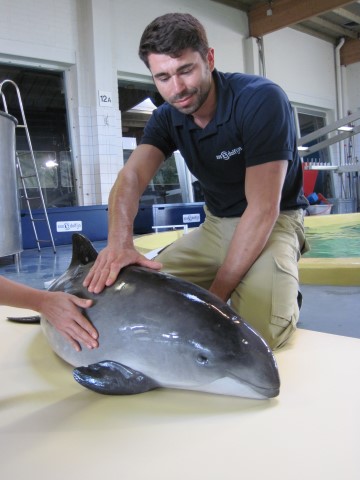 During my career I have been involved with many worldwide marine mammal rescue and rehabilitation programs. Consequently, I have personally witnessed countless cases where marine mammals have become stranded, most of which have had direct or indirect links to human impacts. Stranded animals are defined as ‘any dead marine mammal on shore, any live dolphin or whale cast ashore or unable to return to its natural habitat, or any live seal that cannot leave shore due to injury or poor health’ (NOAA). Conservation medicine is emerging to better understand the causations of these complex and multifactorial stranding events, resulting in policy makers being able to implement changes in national and international mitigation measures to protect the marine environment. Marine mammals are widely considered as ‘charismatic mega fauna’ and are able to create special public appeal, drawing attention to the plight of ecosystems.
During my career I have been involved with many worldwide marine mammal rescue and rehabilitation programs. Consequently, I have personally witnessed countless cases where marine mammals have become stranded, most of which have had direct or indirect links to human impacts. Stranded animals are defined as ‘any dead marine mammal on shore, any live dolphin or whale cast ashore or unable to return to its natural habitat, or any live seal that cannot leave shore due to injury or poor health’ (NOAA). Conservation medicine is emerging to better understand the causations of these complex and multifactorial stranding events, resulting in policy makers being able to implement changes in national and international mitigation measures to protect the marine environment. Marine mammals are widely considered as ‘charismatic mega fauna’ and are able to create special public appeal, drawing attention to the plight of ecosystems.
Stranded marine mammals are a great source of information about the ocean environment. They can be sampled to quantify contaminant levels in tissues and alert researchers to diseases that are present in the more inaccessible wild animals. A number of infectious agents in marine mammals were first identified in stranded animals, after which their presence in the free-ranging population was confirmed. These include, for example, the phocine distemper virus (PDV), which caused the death of over 18,000 European harbour seals in 1988, the phocine herpes virus (PhHV1) isolated from stranded harbour seals in 1985, and Brucella in a variety of other species.
Stranded animals in rehabilitation centres can also offer an excellent opportunity to monitor clinical signs that may result from changes in ocean health. For example, over the past 20 years a thorough examination of stranded California sea lions detected domoic acid a marine biotoxin produced by the diatom Pseudonitzschia australis, which has since been linked to human biowaste and agricultural runoff. The sea lions had consumed toxin-laden anchovies, and the domoic acid concentrated in the tissues caused muscle tremors, seizures, and death. In this case, the findings warned against human consumption of the anchovies, and increased monitoring of other seafood in the area.
The hearing and sound production capabilities of cetaceans have been well studied and many species can hear well outside the range of human hearing. However, most of what we know about the hearing ability of cetaceans has been inferred from studies conducted on dolphins housed at marine mammal facilities. Much less is known about hearing in other cetacean species, such as large baleen whales and some of the larger toothed whales.
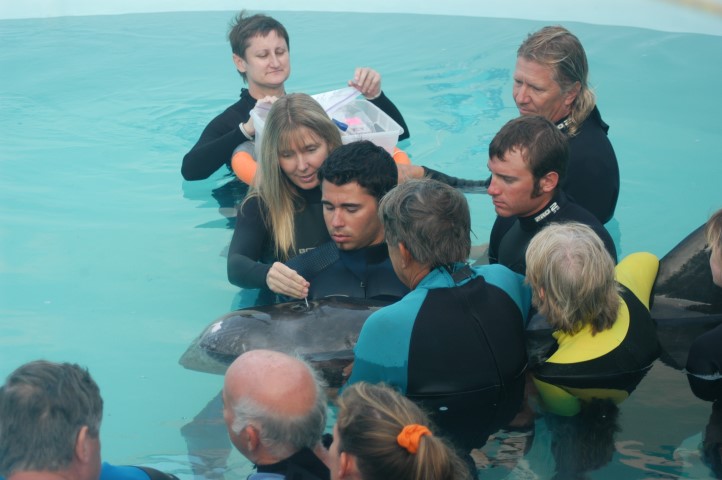 Over the past 20 years, intense sounds from naval vessels and seismic testing have been implicated in several stranding events at various locations. Studies are currently under way to investigate the effects of anthropogenic noise on cetaceans. Many of the cetaceans I have personally worked with in rehabilitation almost all showed signs of hearing impairment, with one dolphin being completely deaf. Whether these cases can be connected with anthropogenic noise requires further investigation resulting in understanding the effects of intense noise and contributing to the development of mitigation strategies. Ultimately, the aim is to find a balance between the basic needs of marine mammals and the important role the ocean plays in travel, commerce, natural resources, exploration, and maritime defence.
Over the past 20 years, intense sounds from naval vessels and seismic testing have been implicated in several stranding events at various locations. Studies are currently under way to investigate the effects of anthropogenic noise on cetaceans. Many of the cetaceans I have personally worked with in rehabilitation almost all showed signs of hearing impairment, with one dolphin being completely deaf. Whether these cases can be connected with anthropogenic noise requires further investigation resulting in understanding the effects of intense noise and contributing to the development of mitigation strategies. Ultimately, the aim is to find a balance between the basic needs of marine mammals and the important role the ocean plays in travel, commerce, natural resources, exploration, and maritime defence.
Environmental stressors can impact upon animal life and cause changes in behaviour, habitat use and prey availability. Moreover, human activities can produce chemical pollution thus distorting marine processes and resulting in disease outbreaks. We need to constantly consider our impacts and how we can reduce them.
The long-term consequences of environmental change on aquatic ecosystems are not well understood but are likely to include aspects of disease emergence in aquatic plants and animals. Teams of veterinarians and conservation biologists are in the midst of a global effort to understand the “ecology of disease.” As the effects of climate change and environmental degradation are debated, worldwide concern is being raised about the health of our aquatic ecosystems. Emerging diseases have themselves become new drivers of environmental change since they can cause extinction of endangered species, alter the ratios of predators-prey-competitors-recyclers necessary for a balanced ecosystem, and alter habitats already threatened by human expansion and climate change.
Els Vermeulen - Common bottlenose dolphins in Argentina: a common species on its way out?
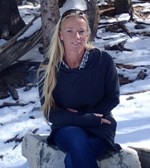 There has been a significant decrease of bottlenose dolphin sightings along the coasts of Argentina in the past 20 years. One of the last regions where their observation isfrequent is in the Bay of San Antonio, making this region an ideal place for a long-term study of this top mammalian predator, offering a perfect opportunity to study its ecology, behaviour and population dynamics. As such, in 2006, I commenced a photo-identification-based research of bottlenose dolphins within the framework of my PhD at the University of Liège, Belgium.
There has been a significant decrease of bottlenose dolphin sightings along the coasts of Argentina in the past 20 years. One of the last regions where their observation isfrequent is in the Bay of San Antonio, making this region an ideal place for a long-term study of this top mammalian predator, offering a perfect opportunity to study its ecology, behaviour and population dynamics. As such, in 2006, I commenced a photo-identification-based research of bottlenose dolphins within the framework of my PhD at the University of Liège, Belgium.
First results of my research indicated that the bay is home to a highly resident population of bottlenose dolphins, possibly the last remaining one of Argentina. The obtained abundance estimates indicate this population is smaller than most other coastal bottlenose dolphin populations, and that it is declining over the years due to a recruitment rate most likely insufficient to compensate for the natural mortality in the population. The reported high contamination with heavy metals and the overfishing in the area is suggested to be among the possible causes of this decline and should be investigated further.
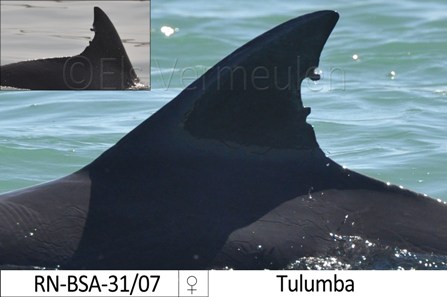 Analysis of social structure indicates that, although this community clearly qualifies as fission-fusion society, the associations within this population were much stronger when compared to other dolphin populations worldwide, most likely linked to the population’s small size and closed nature. Further considering the genetic isolation and low genetic diversity of the studied population, and the continuous increasing urbanization and other anthropogenic activities in the country, it is suggested that this population is highly vulnerable and at risk.
Analysis of social structure indicates that, although this community clearly qualifies as fission-fusion society, the associations within this population were much stronger when compared to other dolphin populations worldwide, most likely linked to the population’s small size and closed nature. Further considering the genetic isolation and low genetic diversity of the studied population, and the continuous increasing urbanization and other anthropogenic activities in the country, it is suggested that this population is highly vulnerable and at risk.
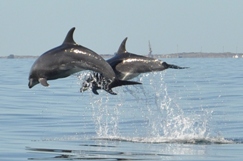 Coastal common bottlenose dolphins are amongst the best-studied cetacean species in the world due to their accessibility in the wild and common presence in captivity. However, despite extensive research, increasing numbers of coastal populations are reported to be declining worldwide. Unfortunately, local declines of common species are easily overlooked when establishing priorities for conservation. The failure to recognize local population declines, and thus failure to apply precise conservation measures, causes the frequent problem of once-common species sliding towards extinction as a consequence.
Coastal common bottlenose dolphins are amongst the best-studied cetacean species in the world due to their accessibility in the wild and common presence in captivity. However, despite extensive research, increasing numbers of coastal populations are reported to be declining worldwide. Unfortunately, local declines of common species are easily overlooked when establishing priorities for conservation. The failure to recognize local population declines, and thus failure to apply precise conservation measures, causes the frequent problem of once-common species sliding towards extinction as a consequence.
Sarah Barry - From Hebrides Cetaceans to Bats!
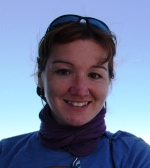
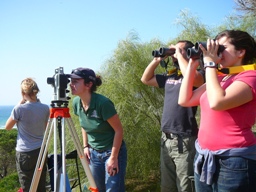 For several field seasons I undertook relief work for the Marine Biodiversity Officer of the Hebridean Whale and Dolphin Trust (HWDT). Duties involved the overseeing the collation and Quality Control of data collection by volunteers on the research vessel Silurian, collecting visual and acoustic distribution data. I also held the role of Marine Sightings Co-ordinator for HWDT, collating marine mammal sightings from the West coast of Scotland to show distribution and population numbers of marine mammals. Part of this work also involved assisting the HWDT outreach programme in local schools educating children on marine conservation. I am also familiar with land based data collection, being involved with land based studies using theodolites, collecting data for CIRCE (Conservation, Information and Research on Cetaceans, Spain), DoC (Department of Conservation, New Zealand) and the HWDT.
For several field seasons I undertook relief work for the Marine Biodiversity Officer of the Hebridean Whale and Dolphin Trust (HWDT). Duties involved the overseeing the collation and Quality Control of data collection by volunteers on the research vessel Silurian, collecting visual and acoustic distribution data. I also held the role of Marine Sightings Co-ordinator for HWDT, collating marine mammal sightings from the West coast of Scotland to show distribution and population numbers of marine mammals. Part of this work also involved assisting the HWDT outreach programme in local schools educating children on marine conservation. I am also familiar with land based data collection, being involved with land based studies using theodolites, collecting data for CIRCE (Conservation, Information and Research on Cetaceans, Spain), DoC (Department of Conservation, New Zealand) and the HWDT.
I have since moved on to participate in other projects worldwide. In Australia I assisted with collecting photo-Id and acoustic data for the Dolphin Research Institute population study of the Bottlenose dolphin of Port Phillip Bay Victoria. My work has also extended to wildlife guiding with various whalewatching companies during which time I ensured that all marine mammal data was collected diligently so that the data could be utilised by local researchers at universities or with local NGOs. With support from a whale watch company in South Africa, I organised beach cleans with local schools and gave presentations within the 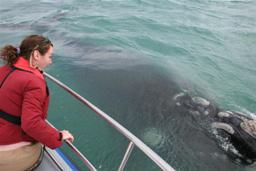 community on conservation of the marine environment.
community on conservation of the marine environment.
Currently volunteering to collect acoustic data on echolocating bats, I am hoping to expand my knowledge on bio-acoustics and become a qualified surveyor of bats.
Ruth Esteban - Working for (Conservation, Information and Research on Cetaceans, Spain)
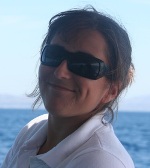 While working with CIRCE (Conservation, Information and Research on Cetaceans, Spain), I am involved in the conservation plan proposals for all the species of marine mammals in waters of the Spanish Mediterranean.
While working with CIRCE (Conservation, Information and Research on Cetaceans, Spain), I am involved in the conservation plan proposals for all the species of marine mammals in waters of the Spanish Mediterranean.
I also participate in the design of the Marine Strategy for Spain, providing qualified information for the management plan of the marine conservation areas in Spain; participating in Environmental Impact Assessment and I also contribute into the assessment of endangered species of marine mammals in Spain.
Alison Gill - Mixing with Minkes
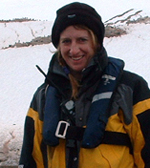
 The first cetacean I ever saw what a minke whale, not the target species on the whale watching trip for sperm whales which we never saw, however I wasn't disappointed. A curious species this whale interacted with the boat and I was hooked. Some years later I was fortunate to be offered a project studying minke whales off the coast of Mull, in the Hebrides as part of a university Masters thesis. Using photo-identification techniques I soon learnt that these whales show summer site fidelity to the waters off Mull, attracted by the abundance of fish to feed upon. This work was done with Sea Life Surveys, a whale watching company based on Mull in collaboration with the Hebridean Whale and Dolphin Trust. My study extended into many more years working also as a whale guide on board the research vessel as public participation was very much part of the project. My time with the minke whales was fabulous - they are a wonderful species to watch as they can be very curious and will often approach vessels. We would often see very young whales in our study area which are particularly playful. A summary of my time with the minke whale can be found on my website www.projectminke.com.
The first cetacean I ever saw what a minke whale, not the target species on the whale watching trip for sperm whales which we never saw, however I wasn't disappointed. A curious species this whale interacted with the boat and I was hooked. Some years later I was fortunate to be offered a project studying minke whales off the coast of Mull, in the Hebrides as part of a university Masters thesis. Using photo-identification techniques I soon learnt that these whales show summer site fidelity to the waters off Mull, attracted by the abundance of fish to feed upon. This work was done with Sea Life Surveys, a whale watching company based on Mull in collaboration with the Hebridean Whale and Dolphin Trust. My study extended into many more years working also as a whale guide on board the research vessel as public participation was very much part of the project. My time with the minke whales was fabulous - they are a wonderful species to watch as they can be very curious and will often approach vessels. We would often see very young whales in our study area which are particularly playful. A summary of my time with the minke whale can be found on my website www.projectminke.com.
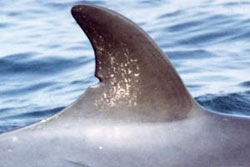 Since this time I have also visited some other minke whale projects in Canada - ORES and the USA - Northeast Pacific Minke Whale Project to meet other minke whale researchers. I have also been involved with other cetacean projects and guiding work. For two summers I studied the acoustics of Risso's Dolphins on the Isle of Lewis, Scotland. In addition to Scotland I have worked as a whale guide in Antarctica and Iceland.
Since this time I have also visited some other minke whale projects in Canada - ORES and the USA - Northeast Pacific Minke Whale Project to meet other minke whale researchers. I have also been involved with other cetacean projects and guiding work. For two summers I studied the acoustics of Risso's Dolphins on the Isle of Lewis, Scotland. In addition to Scotland I have worked as a whale guide in Antarctica and Iceland.
Patrick Lyne - Offshore Ireland Surveys
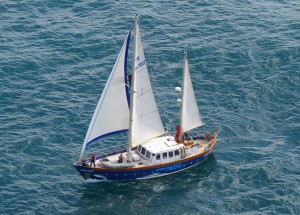 Since 2008 I have been working with the Irish Whale and Dolphin Group (IWDG) as their Marine Mammal Observer Coordinator. This has largely been using the IWDG to place MMOs in work and earn an agency fee for the IDWG to fund conservation work. As part of this I work with the IWDG informing government policy in Ireland on marine mammal mitigation during offshore operations as I feel that this area still needs much attention. When the IWDG was gifted a 56ft motor sailboat, the Celtic Mist, after a refit I was fortunate to be able to take her out for a survey. Incredibly we ran into two blue whales on our arrival on the shelf edge on the start of the first morning offshore.
Since 2008 I have been working with the Irish Whale and Dolphin Group (IWDG) as their Marine Mammal Observer Coordinator. This has largely been using the IWDG to place MMOs in work and earn an agency fee for the IDWG to fund conservation work. As part of this I work with the IWDG informing government policy in Ireland on marine mammal mitigation during offshore operations as I feel that this area still needs much attention. When the IWDG was gifted a 56ft motor sailboat, the Celtic Mist, after a refit I was fortunate to be able to take her out for a survey. Incredibly we ran into two blue whales on our arrival on the shelf edge on the start of the first morning offshore.
 Since then I have been trying to highlight the fact the Porcupine Bight is a rich area for a number of marine mammal species and to make a case for temporal exclusion of offshore industry activities from mid-August until at least the end of October, for at least part of this area. This request is still ongoing and the IWDG will work with the Irish Air Corps to conduct aerial surveys over the Porcupine Bight, to gather further data and this work began in May 2014.
Since then I have been trying to highlight the fact the Porcupine Bight is a rich area for a number of marine mammal species and to make a case for temporal exclusion of offshore industry activities from mid-August until at least the end of October, for at least part of this area. This request is still ongoing and the IWDG will work with the Irish Air Corps to conduct aerial surveys over the Porcupine Bight, to gather further data and this work began in May 2014.
I will return to the Porcupine Bight with the Celtic Mist again in September and this time wish to start with getting some visual observations of sperm whales hopefully some photo id shots. Acoustics show us there are many sperm whales in one area and I have not yet visually observed any of this group to date.
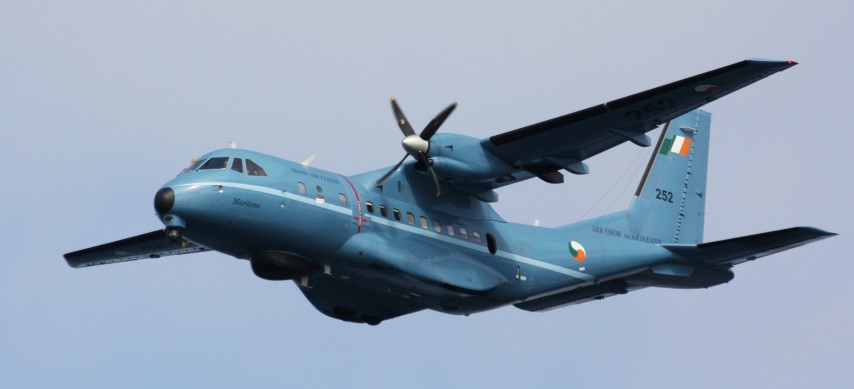 We should also see blue and fin whales again and hopefully back in their normal location. The IWDG will also be making formal submission to request temporal exclusion in the Porcupine Bight for the protection of fin and blue whales soon and I think we now have a strong case for this. I am also trying to get more media coverage for cetaceans in Ireland as being out of sight on the shelf edge, really puts them out of mind. To this end I hope some media contacts will soon bear fruit in making the case for protection of cetaceans in Irish waters more public.
We should also see blue and fin whales again and hopefully back in their normal location. The IWDG will also be making formal submission to request temporal exclusion in the Porcupine Bight for the protection of fin and blue whales soon and I think we now have a strong case for this. I am also trying to get more media coverage for cetaceans in Ireland as being out of sight on the shelf edge, really puts them out of mind. To this end I hope some media contacts will soon bear fruit in making the case for protection of cetaceans in Irish waters more public.
Photos from top: RV Celtic Mist (courtesy Irish Air Corps) / Blue whale Porcupine Bight Sept 2012 / Irish Air Corps CASA CN 235 Maritime Patrol aircraft used for aerial surveys
